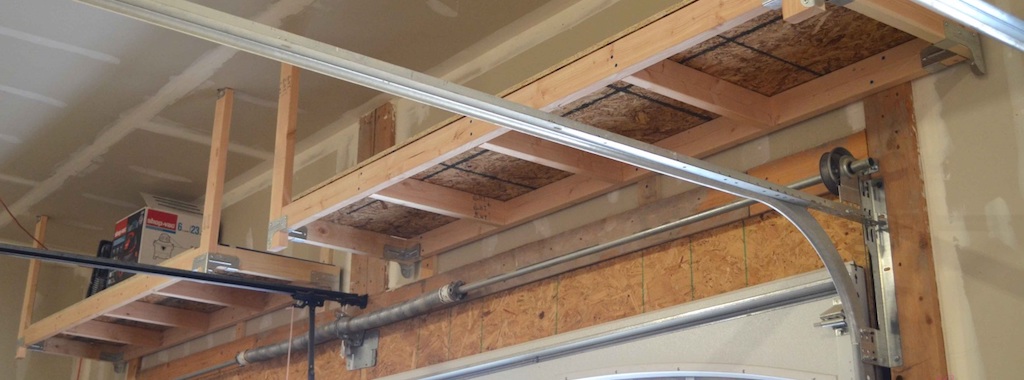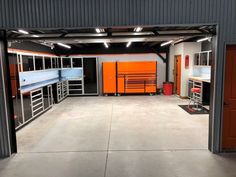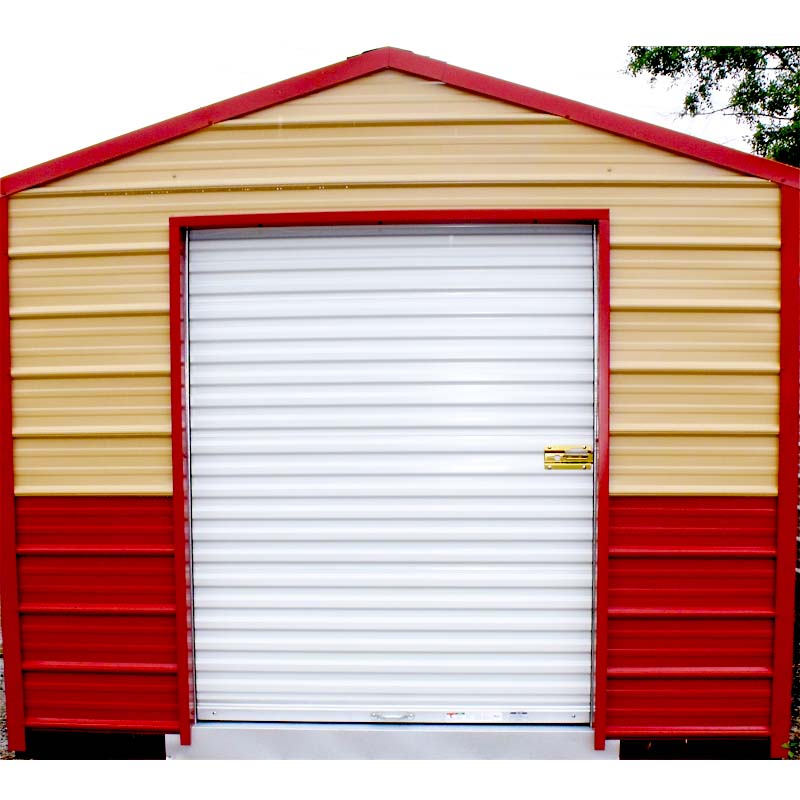
Garage doors play an important role in the overall safety and security of your home, as well as providing added protection for your vehicles. A garage door can be an aesthetic addition that enhances your home's curb-appeal. But, it is essential that you choose the right type of door to suit your needs and budget.
The best residential garage door 2021 will give you security and safety while looking stunning. You have many choices of styles and materials, so take your time in making your decision.
Metal: The most common option for residential garage doors is steel. This material is durable and easy-to-maintenance and comes in a wide range of colors. These are also available in smooth and embossed panels, which will enhance the look of your home's exterior.
Glass: A full view glass garage door will make your home stand out and let in natural light. This style will increase your property’s value, while it is also easy to maintain and secure.

Wood: A timeless option, wood garage doors are a popular choice for many homeowners. They are made from natural materials, such as acacia and cedar, mahogany, walnut and mahogany. These doors look great and can match any decor.
Amarr: Amarr garage doors are well-known for their durability, reliability and affordability. They offer a wide range of garage door sizes, styles and color options to ensure you get the right fit for your home.
CHI: CHI has over 50 years of garage door industry experience. They are well-known for providing excellent customer service and high-quality products.
Contemporary: If you have a minimalistic and modern home, a contemporary garage doors is the right choice. These garage doors combine elements of metal, glass and wood with clean lines to make a durable and attractive door that will last many years.
Carriage: For those who love history, a carriage-style garage doors is the right choice. These doors are authentic and will give your home an elegant, unique look.

Composite: For those who love the look of wood, but don't want to worry about the maintenance involved, a composite garage door is a perfect option. They have a texture that mimics wood, but don't require any maintenance.
Aluminum: It is a good choice for coastal residents who want to avoid rusting due to salt spray. These garage doors can be combined with a panel window to allow in natural sunlight.
Steel: A steel door with an overlay that looks like wood is a great choice for people who don't want to spend a lot on upkeep. These garage doors come with a wide range of colors, including whites, bronzes, sandstones, and browns.
Begin shopping for a new garage entrance by speaking with an experienced dealer. This will help you to navigate the process, answer your questions, and guide you throughout. There are so many choices, so it is important that you choose a door that complements your home and adds value to your investment.
FAQ
What would it cost for a home to be gutted versus what it would cost to build one?
The process of gutting a house involves removing all contents inside the building. This includes walls, floors and ceilings, plumbing, electrical wiring and appliances. It's often necessary when you're moving to a new house and want to make changes before you move in. Due to so many factors involved in the process of gutting a property, it can be very costly. Depending on your job, the average cost to gut a home can run from $10,000 to $20,000.
A builder builds a house by building it frame by frame. Then, he adds walls and flooring, roofing, windows and doors. This is done usually after purchasing lots. Building a home is typically cheaper than renovating, and usually costs between $15,000-30,000.
It comes down to your needs and what you are looking to do with the space. You'll need to spend more if you plan to gut your home. If you're building your home, however, you don't have to tear everything down and start over. You can build it as you wish, instead of waiting to have someone else tear it apart.
Remodeling a kitchen or bathroom is more expensive.
Remodeling your bathroom or kitchen is expensive. It might be more cost-effective to upgrade your home than you think, given how much you spend each month on energy bills.
You could save thousands each year by making a small upgrade. Simple improvements such as insulation of walls and ceilings can lower heating and cooling costs up to 30 percent. Even a modest addition can improve comfort and increase resale value.
When planning for renovations, it is important to select durable and easy-to-maintain products. Materials like porcelain tile, solid wood flooring, and stainless-steel appliances will last longer and need fewer repairs than vinyl countertops.
You might find that upgrading to newer fixtures can cut down on utility costs. Installing low-flow faucets or showerheads can cut water use by up to 50%. Up to 75 percent of electricity can be saved by replacing inefficient lighting fixtures with compact fluorescent bulbs.
Why should I renovate my house instead of buying a new one.
While houses may get more affordable each year, the square footage you pay is still the same. You get a lot more bang than you pay, but that extra square footage is still a significant expense.
It's cheaper to maintain a house without much maintenance.
Remodeling instead of buying a brand new home can help you save thousands.
By remodeling your current home, you can create a unique space that suits your lifestyle. You can make your home more comfortable for you and your family.
What's the difference between a remodel or a renovation?
Remodeling is making major changes to a particular room or area of a given room. A renovation is a minor change to a room or a part of a room. For example, a bathroom remodel is a major project, while adding a sink faucet is a minor project.
Remodeling involves the complete or partial renovation of a room. A renovation involves only changing a portion of a room. A kitchen remodel could include replacing countertops, sinks and appliances as well as changing lighting and paint colors. But a kitchen update could include painting the wall color or installing a new light fixture.
What's included in a complete kitchen remodel?
A complete kitchen renovation involves more than simply replacing the sink and faucet. There are cabinets, countertops as well, lighting fixtures and flooring.
A full kitchen remodel allows homeowners to update their kitchens without having to do any major construction. This means there is no need to tear down the kitchen, making the project more manageable for both the homeowner as well as the contractor.
Many services are required for kitchen renovations, such as electrical, plumbing and HVAC. Depending on the scope of the project, multiple contractors might be needed to remodel a kitchen.
Professionals with years of experience working together are the best way ensure a successful kitchen remodel. Kitchen remodels are complex and can be delayed by small issues. You should plan ahead and prepare a backup plan for any unexpected situations if you decide to DIY.
How much does it cost for a shower to be tiled?
Do it yourself if possible. It's an investment to remodel a full bathroom. But when considering the long-term value of having a beautiful space for years to come, it makes sense to invest in quality materials and fixtures.
The right tiles can make a huge difference in how your room looks and feels. Here's how to choose the right tiles for your home, regardless of whether it's a small renovation or major project.
Decide the type of flooring that you want to install. Common choices include ceramics and porcelain as well as stone and natural wooden. Next, pick a style like classic subway tiles or geometric designs. Next, choose a color palette.
If you are remodeling a large bathroom, you'll likely need to match the tile with the rest. For example, you might opt for white subway tile in your kitchen or bath and choose darker colors elsewhere.
Next, estimate the scope of work. Is it time for a small update to the powder room? Or would you prefer to add an extra bedroom in your master suite with a walkin-in closet?
After you have established the project's scope, it is time to visit local stores and view samples. This allows you to get a feel and idea for the product as well as its installation.
Online shopping is a great way to save on porcelain tiles and ceramics. Many retailers offer discounts for bulk purchases and free shipping.
Statistics
- $320,976Additional home value: $152,996Return on investment: 48%Mid-range average cost: $156,741Additional home value: $85,672Return on investment: (rocketmortgage.com)
- bathroom5%Siding3 – 5%Windows3 – 4%Patio or backyard2 – (rocketmortgage.com)
- 55%Universal average cost: $38,813Additional home value: $22,475Return on investment: 58%Mid-range average cost: $24,424Additional home value: $14,671Return on investment: (rocketmortgage.com)
- 57%Low-end average cost: $26,214Additional home value: $18,927Return on investment: (rocketmortgage.com)
- Attic or basement 10 – 15% (rocketmortgage.com)
External Links
How To
How to Install Porch Flooring
Although porch flooring installation is simple, it requires some planning and preparation. The easiest way to install porch flooring is by laying a concrete slab before installing the porch flooring. But, if you don’t have the concrete slab available, you could lay a plywood board deck. This allows porch flooring to be installed without the need for a concrete slab.
The first step when installing porch flooring is to secure the subfloor (the plywood). First measure the porch's width. Then cut two strips from wood that are equal in width. These should be placed on both sides of your porch. Next, nail them into place and attach them to the walls.
Once you have secured the subfloor, you will need to prepare the space where you want to install the porch flooring. Typically, this means cutting the top layer of the floorboards to size. Next, finish the porch flooring. Polyurethane is the most common finish. Staining porch flooring is also an option. You can stain your porch flooring more easily than applying a clear coating. All you need to do is sand the stained area after applying the final coat.
Now you are ready to put in the porch flooring. Begin by marking the location for porch flooring. Next, cut the porch flooring according to your measurements. Set the porch flooring on its final place, and secure it with nails.
You can install porch stairs if you want to add more stability to your porch flooring. Porch stairs are often made from hardwood. Some people prefer to install their porch stairways before installing their porch flooring.
Once you have installed your porch flooring, it is time to complete the project. You will first need to remove the porch flooring, and then replace it with a brand new one. Then, you will need to clean up any debris left behind. Make sure to clean up any dirt and dust around your home.